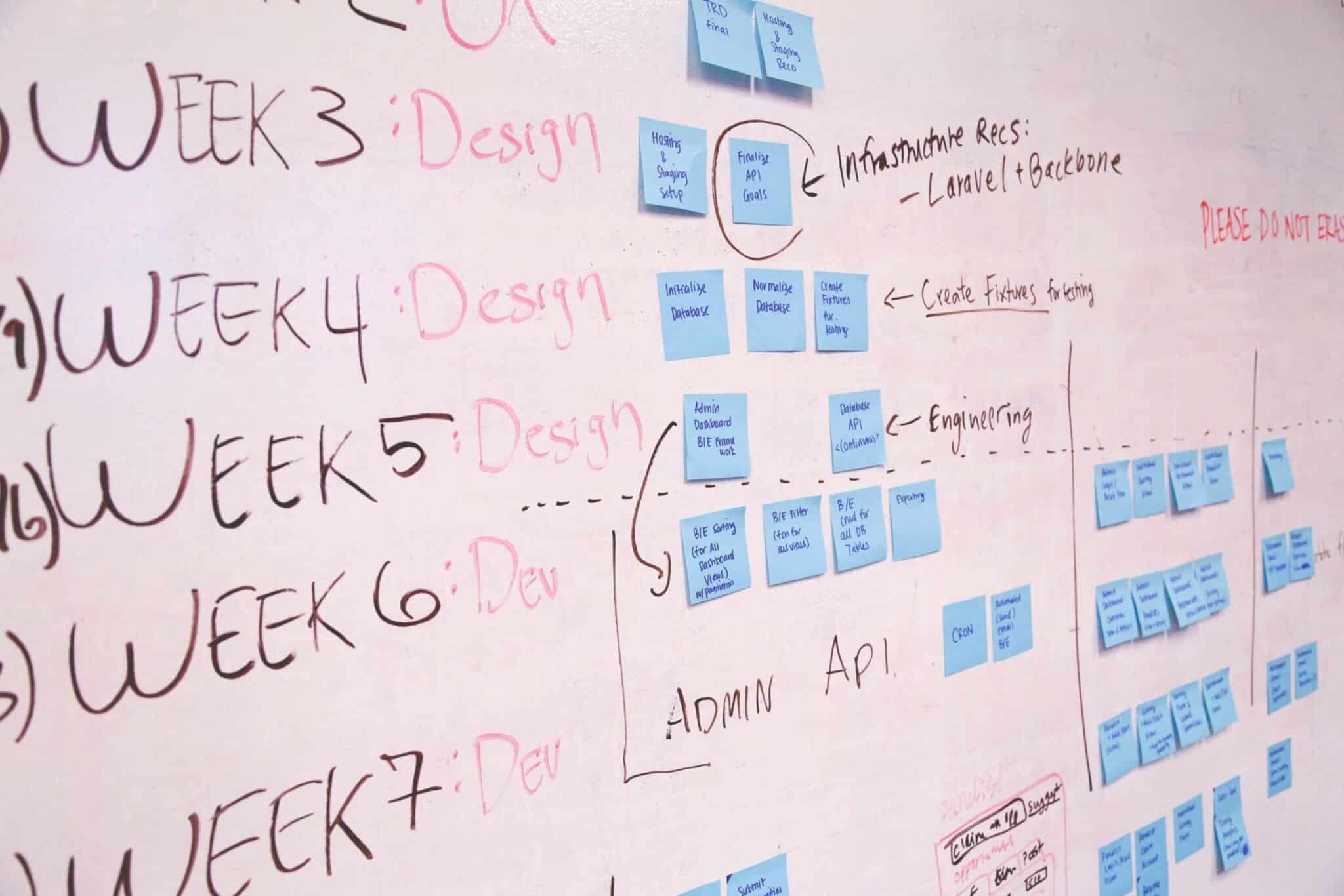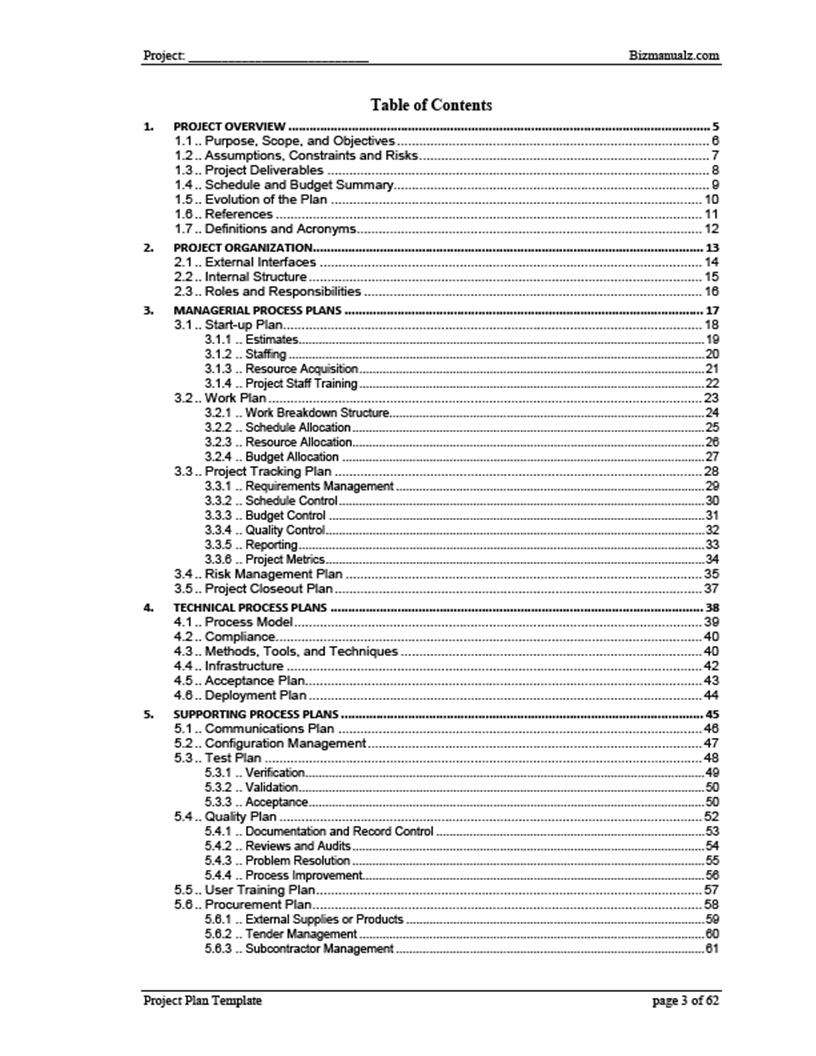What Is Project Planning?

The first phase in any project management process is project initiation, where the goal is to uncover the project’s scope — the boundaries for resources, expectations, results, feasibility, the team, and your requirements — and produce a project charter. Now that you know the project’s goals and scope and you have a project charter, you can move onto the next step: project planning.
Project Planning
Project planning is the second phase of any project management process and consists of developing the core planning elements. The output of this phase is a set of project management documents, or plans. The most important one is the project plan itself (Figure 1 shows the table of contents for a project plan).
Project planning includes five sections:
- The project overview
- Project organization
- Managerial process plan
- Technical process plan
- Supporting process plans
Project Overview
Project planning starts with (1) the project overview, where you summarize and introduce the project. This is your “management abstract”. Management may not read much else, so you have to make an impact here. Explain the ROI, user experience changes, and the benefits of the project. Don’t just list the project features — the deliverables, schedules, milestones, and costs. Explain the benefits to the user, or customer.
Project Organization
Next, your (2) project organization describes the reporting structure, or organization chart, along with the roles and responsibilities for the various project team members, including customers, suppliers, and other stakeholders involved in your project.
Everyone has a role. Customers approve requirements, may participate in testing, and are definitely part of acceptance. Suppliers are involved in your procurement. Note the interfaces to all stakeholders.
In many projects, various resources may be involved only part of the time: clarify individual roles and responsibilities and their level of involvement. A 10% resource may become a critical bottleneck because 90% of their time is being used on other projects. Don’t just make a superficial list of resources — note in detail all resource issues and your project structure, to minimize project risks.
Managerial Process Plan
If management wants to see the details to items mentioned in the project overview — time, money, and risk control — the (3) managerial process plan is where management will find them. How will the customer’s money be controlled? If risk is a big issue, a separate Risk Management plan may be referenced. Are there any issues — hurdles, bottlenecks, dependencies, etc. — that may affect the project’s Closing? If so, think through the Project Closeout plan to note key handoffs, maintenance, or future training issues.
Technical Process Plan
Technical details are covered under the (4) Technical Process plan. Special test equipment, development hardware, expertise, or facilities are explained, to provide cost justification in the budget. Information from the feasibility study may be referenced or included to explain the design approach, methods, or other design inputs.
It is important to explain what acceptance will mean, so everyone will know when you’re done. The Acceptance plan describes how acceptance will occur, those responsible for acceptance and the criteria for acceptance testing. If the solution will be rolled out to a big or a complex group, a Deployment plan may be in order.
Supporting Process Plans
Other planning details are included in (5) supporting process plans. Here you can include additional project planning documents, such as:
- Communications Plan
- Quality Plan
- Procurement Plan
- User Training Plan
- Test Plan
In a large project, these plans could be separate documents (and probably should be, with ample details). In a small project, you could simply incorporate them into the project plan document. Either way, it is important that you make it clear how you intend to face the planning issue. Leaving out an important project planning element could be a cause of project scope creep, leading your project into time or cost overruns and possibly failure.
Project Management Control
Let’s say you’re working on a set-up reduction process improvement project. Your plan focuses on one work cell at one plant that has three shifts. Management suggests you take the improvements on the road to the other eight plants. Stop and think…is this scope creep? It is if your original plan didn’t address training a large number of workers across the country. (It didn’t, did it?)
For the “other eight plants”, you need to see results from the first one. Only when you’re satisfied with those results do you develop a new project charter and a new project plan with a new budget for the other eight. Your new project plan needs a communications plan and a user training plan of its own. Additional training resources will be needed. In other words, despite the similarities, this is a different project.
Project planning produces the most important project management document. The Project Plan and its supporting plans are your primary management control mechanisms. Your project Plan contains the information you use to control the project’s resources and prevent scope creep. Use project planning to explain to management what they are asking for — stay in control of your project.
Download Free Policies and Procedures to see how easy it is to edit MS Word Templates to build your own policy and procedure management system.
















Leave a Reply